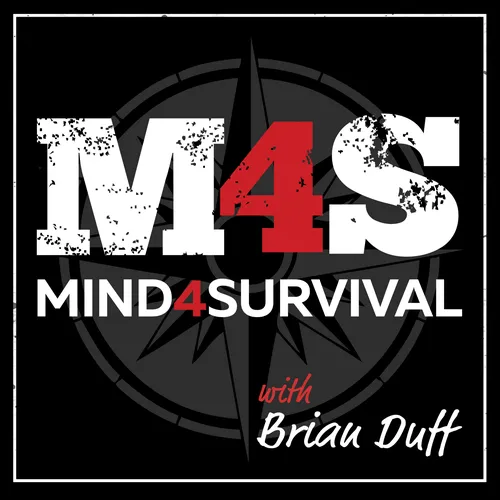How to Get Started Prepping (Practical Tips)
- Author
- [email protected] (Brian Duff)
- Published
- Mon 23 Sep 2024
- Episode Link
- https://mind4survival.com/how-to-get-started-prepping-practical-tips/
Prepping can feel intimidating and expensive, but it doesn’t have to be. Whether you’re new to preparedness or dealing with physical limitations, there are simple and affordable steps anyone can take to ensure their safety and well-being in an emergency. In today’s podcast, we answer a listener’s question from Bridget, who’s looking for advice on practical, inexpensive ways to start prepping. We also explore tips tailored to older adults or those with physical challenges.
Let’s dive into how you can begin your preparedness journey in small, manageable steps—without feeling overwhelmed.
1. Start with Mindset: Prepared, Not Scared
The first thing to understand is that prepping is about empowerment, not fear. It’s easy to feel daunted by the idea of needing to prepare for everything, but the goal isn’t to hoard supplies or buy expensive gear immediately. Instead, focus on small, practical steps you can take right now to prepare for common emergencies.
Don’t get overwhelmed. Start by addressing basic needs: water, food, first aid, and safety. From there, build up your supplies and knowledge over time. Prepping doesn’t happen overnight, and working at your own pace is okay.
Most importantly, adopt a calm and proactive mindset. Preparedness should reduce stress, not increase it. When you take steps to prepare, you’re taking control of your situation, which will help you stay calm and clear-headed in emergencies.
2. Practical and Inexpensive Steps to Get Started
Here are some low-cost, effective ways to get started with prepping, whether you’re a complete beginner or looking to expand your supplies on a budget.
Water Storage
Water is your most crucial resource in any emergency, and having enough stored is essential. Aim to store at least one gallon of water per person per day for drinking, cooking, and hygiene.
You don’t need to buy expensive containers right away. Reusing clean plastic bottles (like soda or juice bottles) is a simple way to store water. Make sure to clean them thoroughly before filling. Over time, you can add storage, such as 5-gallon jugs, to your stockpile.
If you can’t store much water, know how to purify it. Boiling water is the simplest method, but you can also use unscented chlorine bleach (16 drops per gallon; wait 30 minutes before drinking) or invest in an affordable water filter like the LifeStraw or Sawyer Mini.
Food Storage
You don’t need to rush out and buy freeze-dried food. Start with what you already eat. Buy extra cans of non-perishable food like beans, vegetables, pasta, and rice. Add a few items to your cart each time you grocery shop, and slowly build a stockpile.
Remember to rotate your stock using the first-in, first-out method to avoid waste. Over time, you can add long-term food storage items, but focus on the basics for now.
Basic First Aid Kit
A basic first aid kit is essential for treating injuries during an emergency. Most supplies can be found inexpensively at a dollar store or during pharmacy sales. Stock up on bandages, antiseptic wipes, pain relievers, gauze, and a thermometer.
Also, consider adding items specific to your needs, such as prescription medications, extra glasses, or allergy medications. A list of medications and doses is vital in case of a shortage or refill delay.
Emergency Lighting
Power outages are common in emergencies, and having affordable emergency lighting is key. Start with LED flashlights or solar-powered garden lights, which charge during the day and can be brought inside at night. Battery-powered headlamps are also useful for hands-free tasks in the dark.
You can also invest in a small power bank to charge phones, ensuring you can communicate during an emergency.
Create a Go-Bag
A go-bag is a small kit of essential items you c...
